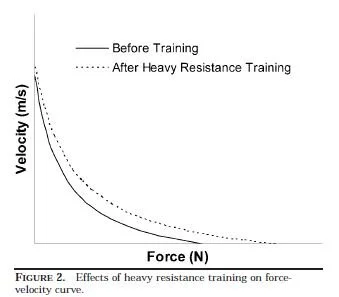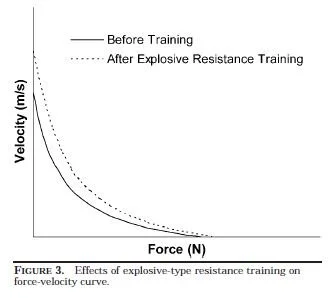This Article is Sponsored by Studio 9 Fitness. The Premier Sports Performance Facility in Wokingham, Berkshire.
Power is calculated by work or energy divided by time.
In training terms, power = force x velocity. Power training typically involves exercises which apply the maximum amount of force as fast as possible.
Jumping with weights or throwing weights are two examples of power training exercises. Regular weight training exercises such as the clean and jerk and power clean may also be considered as being power training exercises due to the explosive speed required to complete the lifts.
Power training may also involve contrasting exercises such as heavy lifts and plyometrics, known as complex training, in an attempt to combine the maximal lifting exertions with dynamic movements. This combination of a high strength exercise with a high-speed exercise may lead to an increased ability to apply power.
Power training frequently utilises two physiological processes which increase in conjunction with one another during exercise. These are deep breathing, which results in increased intra-abdominal pressure; and post-activation potentiation, which is the enhanced activation of the nervous system and increased muscle fibre recruitment.
Power training programmes may be shaped to increase the trainee’s ability to apply power in general, to meet sport specific criteria, or both.
Types of power training:-
Plyometrics and loaded plyometrics
Plyometric training typically involves jumping exercises; these exercises may begin from the feet only or also involve taking off from the hands such as is found in a plyometric push up. Usually, an exercise is considered plyometric or not based upon its speed, the rapidity of its repetitions, and the extent to which it utilises the body’s stretch-shortening cycle.
Ballistic training
Ballistic training is based upon maximising the acceleration phase of an object and minimising the deceleration phase. This may involve throwing a weight, as the term ballistic implies, but may also involve jumping whilst holding a weight or swinging a weight.
Complex training
Complex training, sometimes referred to as contrast training, involves alternating heavy lifts with plyometric exercises. Ideally, the exercises should move through similar ranges of motion. For example, a set of back squats at about 85-95% 1RM followed by a set of vertical jumps. The intention is to utilise the post-activation potentiation (PAP) effect from the heavy back squats in the jumping exercises and thereby increase the power with which the jumps are performed with.
Contrast loading
Contrast loading involves the alternation of heavy and light loads in weight training exercises. The light lifts should be considerably lighter than the heavy lifts. For example, a bench press exercise at about 85-95% 1RM followed by a set at about 30-60% 1RM. The heavy lifts should be performed faster than usual with controlled form, with the lighter lifts being performed as fast as possible.
Explosive lifts
Explosive power lifts are weight training exercises which require a very fast movement to be performed by the lifter in order to lift the weight. For instance, in a power clean, a barbell is quickly lifted from the floor and unto the upper chest; this must be performed fast in one dynamic movement otherwise it would not be possible to move the weight to this position. Similarly, in a clean and jerk, a lifter moves a barbell to a position above their head whilst they quickly lower their height to allow for the easier extension of their arms; this movement must be performed in one very quick fluid action.
Power training and the sport of powerlifting should be distinguished from one another, although there are some areas where they overlap. Powerlifting, as a sport, is often considered in regard to the three main lifts competitions are judged upon. These are the back squat, the deadlift, and the bench press. These exercises would not ordinarily be considered as power training exercises because they are not usually performed fast enough. The sport of powerlifting acquires its name due to the great amount of force that is required to lift very heavy weights. A major difference between powerlifting and power training is that in powerlifting competitions it is often required that the joints are locked for a lift to be registered as complete, whereas this would not usually be possible in power training because it would drastically inhibit the dynamic nature of the movements and lead to injury.
Optimal power production is achieved by maximising the product of force and velocity, so both aspects of training need to be trained to ensure maximal training adaptations. In a study by Kawamori & Haff in 2004 “The optimal training load for the development of muscular power”, it was shown how heavy strength training and explosive strength training affect the force-velocity curve uniquely.
#AntiTalent
Combining both methods will yield optimal results.
We’re not born with power. We build power!
References:-
The optimal training load for the development of muscular power, Kawamori & Haff, 2004
Essentials of Strength Training and Conditioning 3rd Edition, National Strength and Conditioning Association


